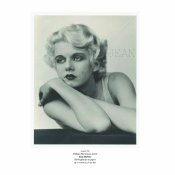Hello,
I don't get the steps required for making a correct 7D negative.
7D negative means measuring the lights and underexpose and overdevelop the film.
If a scene has a contrast range of 3 stops how do I adjust the eposure?
Do I have to underexpose by 2 stops (400 ISO box speed film exposed with 1600)?
But what about measuring the lights? If I measure the lights with the light meter (== Zone V) with the ISO 1600?
The I would have 4 stops underexposure if the light would be Zone VII in real but measured with Zone V.
etc.
I hope you can give me some advice.
Oliver
I don't get the steps required for making a correct 7D negative.
7D negative means measuring the lights and underexpose and overdevelop the film.
If a scene has a contrast range of 3 stops how do I adjust the eposure?
Do I have to underexpose by 2 stops (400 ISO box speed film exposed with 1600)?
But what about measuring the lights? If I measure the lights with the light meter (== Zone V) with the ISO 1600?
The I would have 4 stops underexposure if the light would be Zone VII in real but measured with Zone V.
etc.
I hope you can give me some advice.
Oliver







